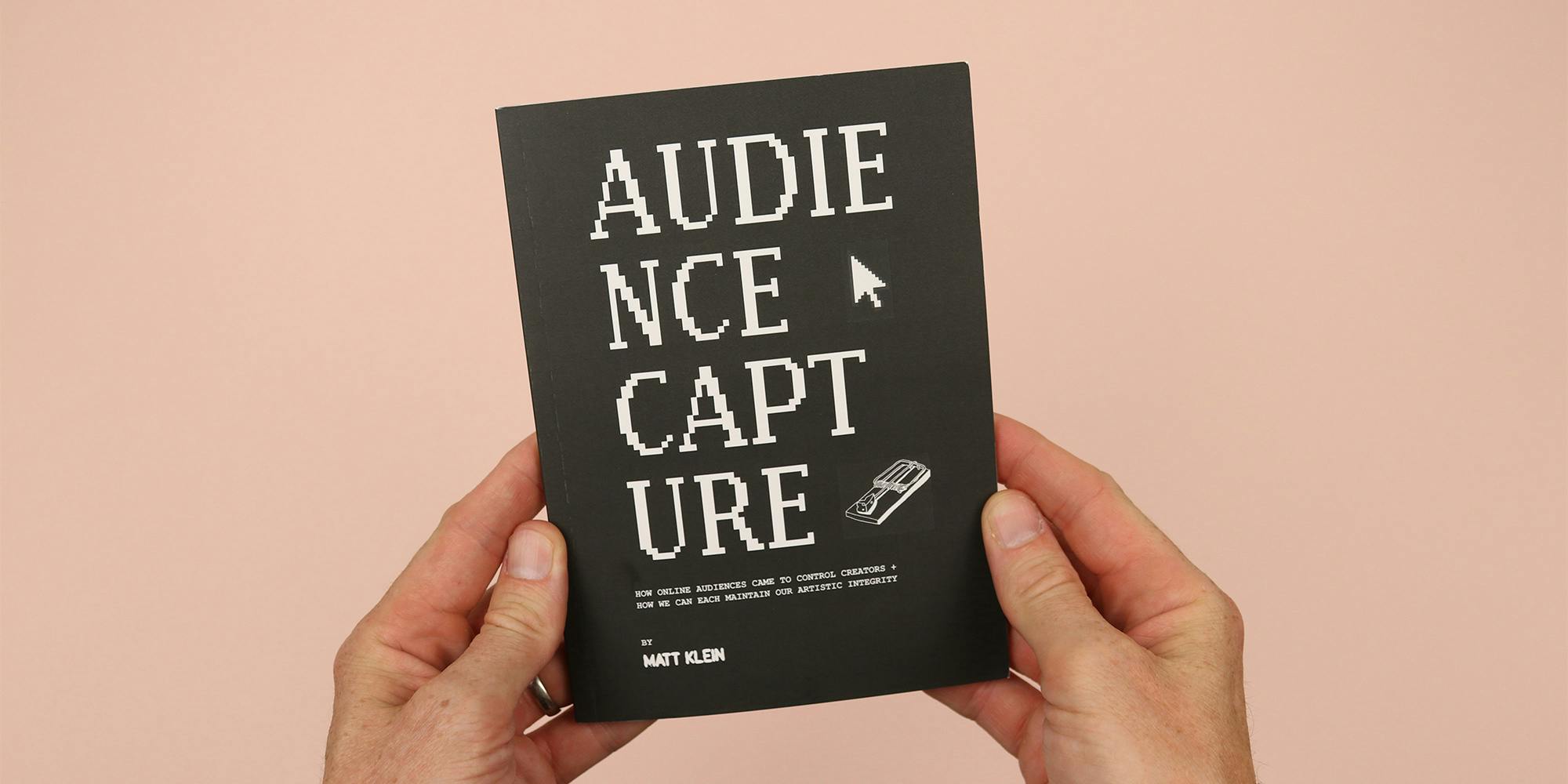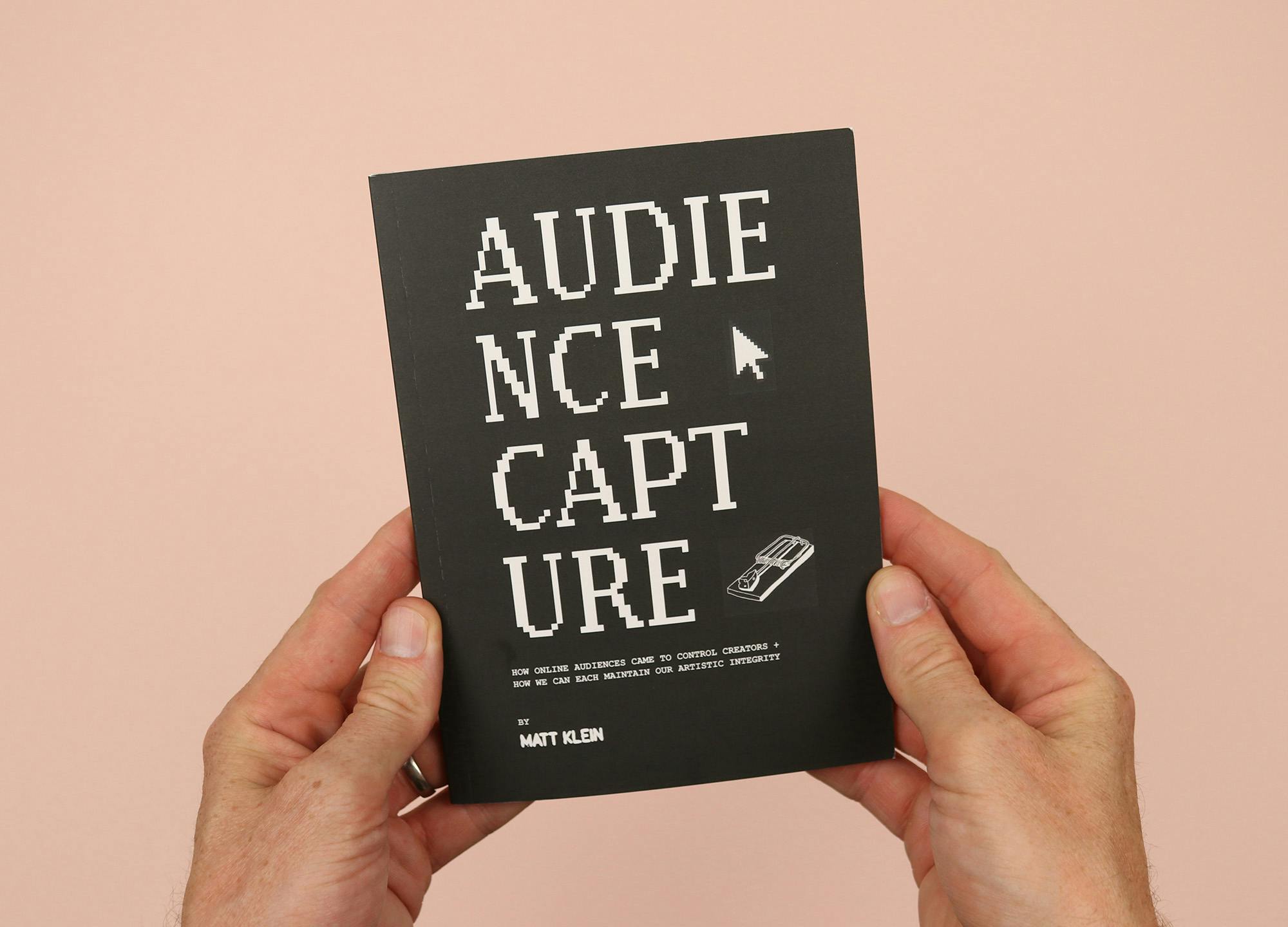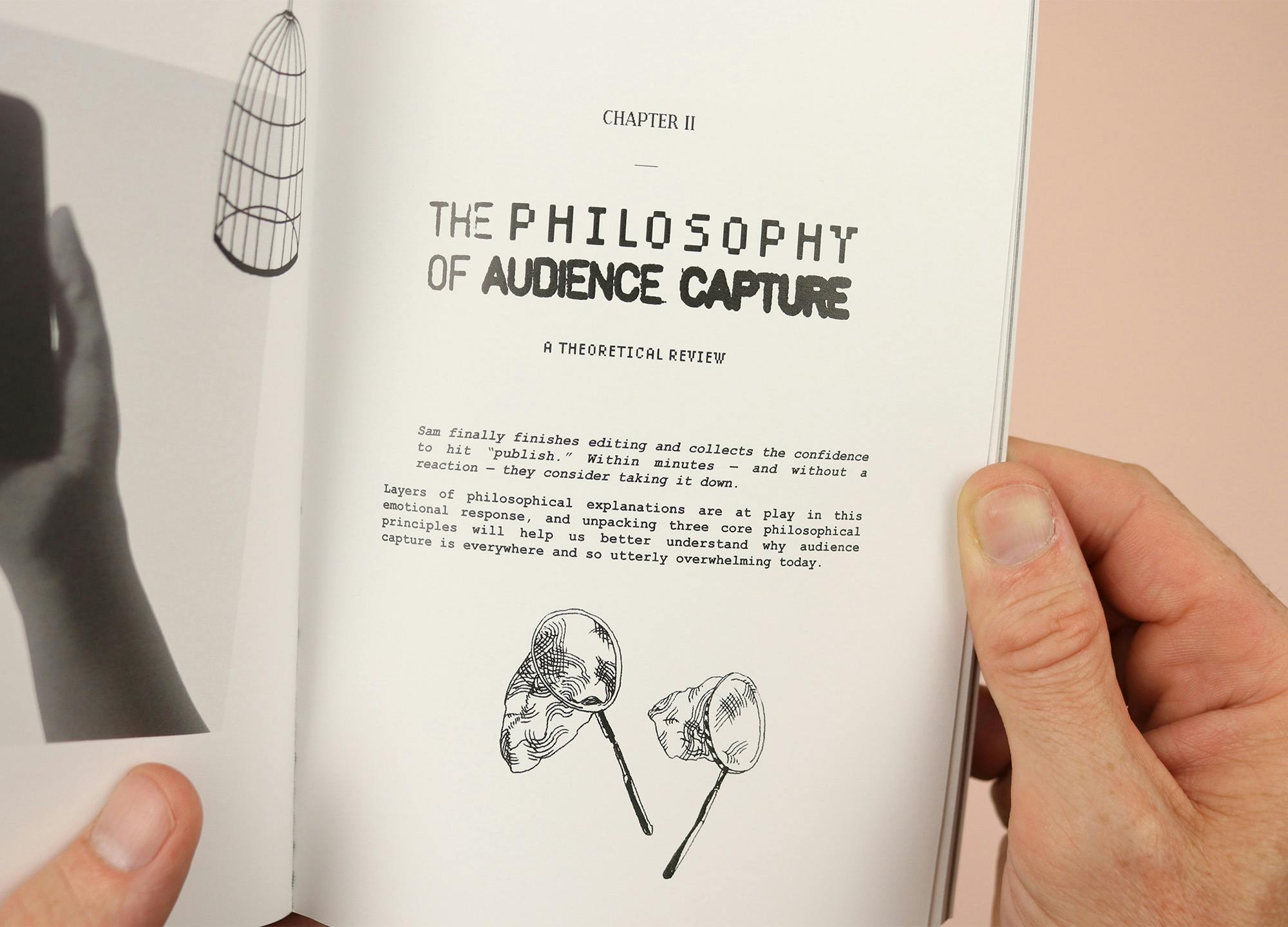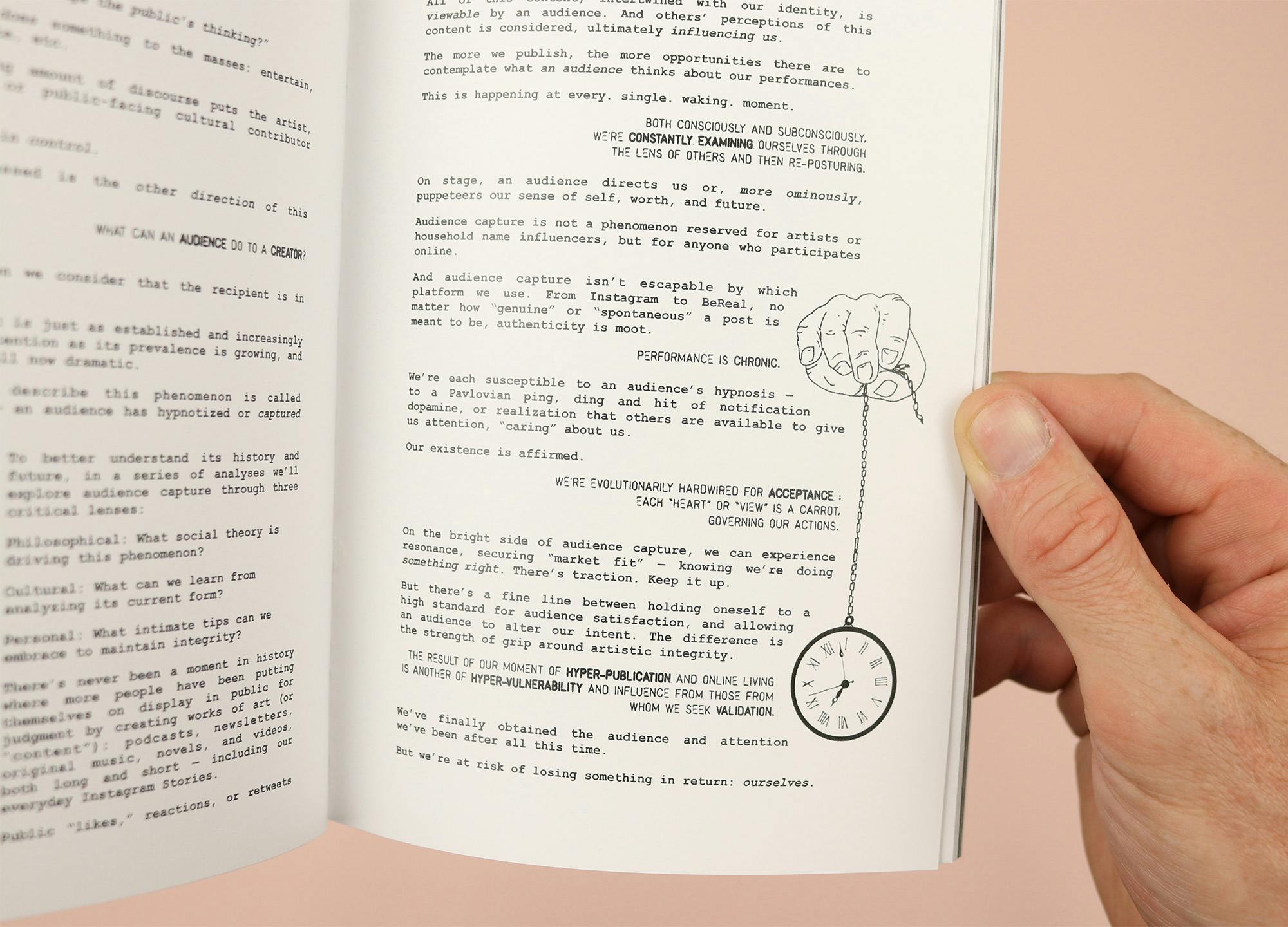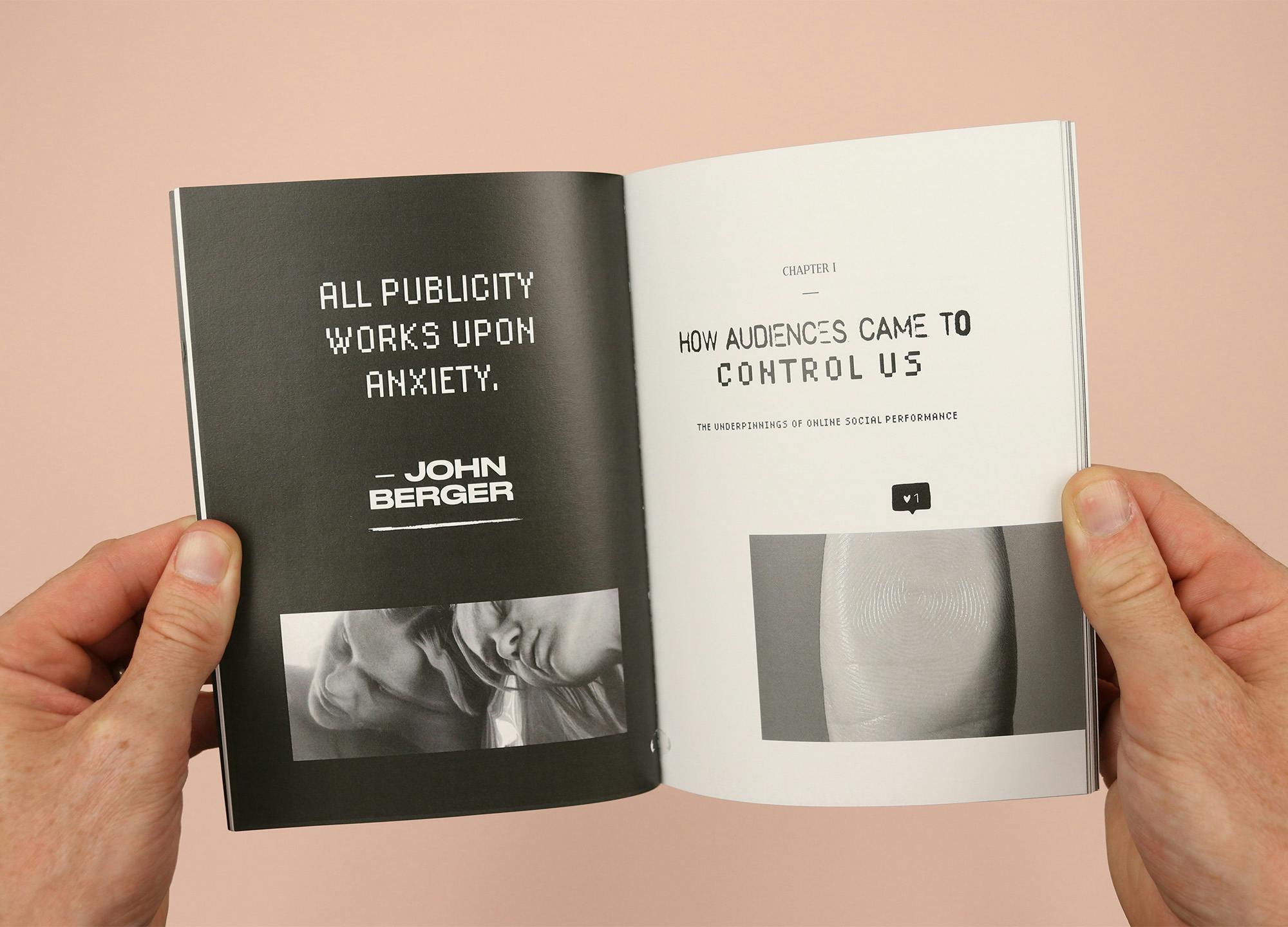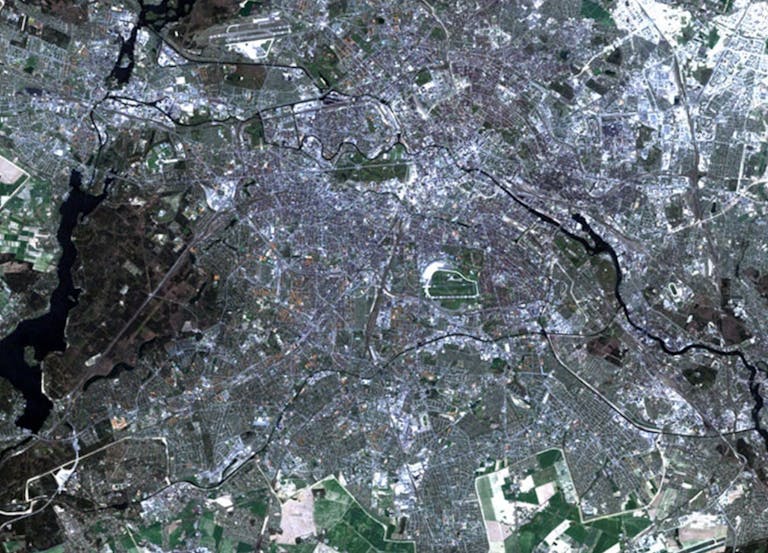Avoiding audience capture
Matt Klein is a busy man. He describes himself as a cultural theorist, a digital anthropologist, and a quant futurist; he’s head of global foresight at Reddit; and he writes a brilliant Substack newsletter called Zine, where he brings together the various things he’s been thinking about lately. (It’s really interesting and it’s free – you should sign up.)
But then a couple of weeks ago an actual printed zine landed on my desk, made by Matt. It’s called Audience Capture, and it investigates the phenomenon of creators being controlled by their audiences. He cites the example of Nicholas Perry, who was, “once a vlogging, vegan violinist who couldn’t find an audience. But once Perry began uploading mukbang videos (eating for the camera and others) an audience gathered. Over time, the audience he fought for pushed him to eat more and more. He did. The views grew. But ultimately, while Perry found his millions of subscribers by binge-eating, he also became morbidly obese.”
That’s an extreme case, but Matt says that virtually all of us are affected by audience capture to some degree. If you’ve ever agonised over posting a picture on Instagram because you want it to get as many likes as possible, you’ve experienced it. If you’ve ever written and rewritten a blog post because of how you think it’s going to be received by a certain set of readers, you’ve definitely experienced it. I wanted to know why this very online person turned to the slowness of print as a way of expressing these ideas, so I gave him a call to ask how he goes about avoiding audience capture, and what he learned from his first foray into print.
I was interested to read that you’re not on social media, yet you still find yourself affected by audience capture. How does that work?
I don’t think I’ve ever shared this story before. I was on Instagram from the very beginning and I shared a sunset photo from my summer camp. It was objectively a very pretty photo. Somebody else on that camp screenshot it, reposted it themselves, upped the saturation maybe 5%, whatever, and because they had maybe 400 followers more than me it got all the likes in the world. I was like, ‘It’s the same photo!’ All that changed was who posted it, and I decided at that point I didn’t want to play that game – that’s not the environment for me. So I deleted my stuff, logged off, and I haven’t been on Instagram since.
I recently just got rid of Snapchat, which was one of my last remaining ones, but overall they just didn’t work for me – it was another portal on my phone that I kept tripping into and falling down, and I didn’t want that. So I’m very intentional about what I have access to and the effect it has on me, but that said I created a Substack and the same thing happened. I was writing for Forbes, and I was essentially mandated to write for SEO and virality, and I thought that made zero sense, so I decided to make a small Substack. I thought maybe 10 of my family and friends would read it – it goes directly to them, and they don’t have to read it, but I know for a fact that they’re going to see it.
Fast forward two years and my Substack has done quite well. We just won a Webby Award for the Best Independent Publication on the Internet, so lots of people are now showing up. The original purpose was to write for myself and family and friends, but now there are academics and authors and CEOs who I follow, who are reading it, and it’s impossible not to remember that when I’m writing. Any time I write something I’m viewing them in the audience chair in front of me, and I think that’s audience capture creeping its way back in.
I’m very fortunate and privileged that the audience has gathered – it’s a great problem to have, but at the same time it’s influencing me in a way I didn’t want. I didn’t want that stress, so it’s perhaps a lesson to everyone that you can be as mindful and sceptical and critical as you want, but that doesn’t mean you can escape it – it always seeps back in through the cracks.
The zine is written in first-person; it’s very direct, with lots of short clauses, so it reads a lot like your newsletter. Did it feel any different writing this because you knew you were writing it for print?
Absolutely. And the other element as well is that as part of the schtick for the release we did ‘buy one give one’, so anyone who bought one received a link that they could send to their friend, which would capture their information, and I would send them the purchaser’s second copy for free. That means I was sending to people who didn’t already know Zine, who didn’t already know who I was, so there was this distance to it that already felt foreign.
The other thing which I haven’t written about or shared was that around two thirds of the people who purchased the zine weren’t already subscribed to the newsletter in the first place. So it’s interesting that it caught traction with people who typically wouldn’t already have been a part of the Zine ecosystem, which I found surprising.
When you send out a Substack email I imagine that very soon afterwards you can start to look at the metrics and see how many people have opened it, what people are clicking on… You obviously can’t do that with a print magazine, so does that affect audience capture?
Yes, in that I don’t know anyone who doesn’t like it! They could have thrown it in the trash the second it arrives and I’d have no idea, but if somebody doesn’t like a Substack piece I’m alerted immediately that this person has unsubscribed. So yeah, it could have absolutely bombed – I’ve received a handful of nice messages about it and people are taking photos of it and sharing them, but other than that it’s silence.
So now you’ve done it once, do you have any plans to make another print thing?
Absolutely. I’m hooked. This was a nightmare in a way – it was a learning experience with the details of print, the paper stock, the colouring… I did not plan to have to hand label 300 packages, and I thought I was being so nice to pay for shipping, until two thirds of my recipients ended up being outside the US, including in Singapore and Dubai… Again, what an incredible problem to have that I’m shipping self-published work to someone in Dubai, that’s incredible… But the long and the short is that I love it – I’m so proud of it, and yes, I’m ready for the next one.
I think the question is, and perhaps it’s a form of audience capture, do I do another small, self-published indie thing, or feeling the power of print, do I take it a level up and do a more formal book with the topics I’m thinking about next? What’s holding me back from going the more formal route is the timeline – two to three years is mind blowing. I can’t wrap my head around it. Audience Capture was maybe six months at most from the Google doc to receiving an email saying, ‘Oh my god I just received it thank you so much.’ It feels unnecessary to have to wait, and maybe again that’s a signal in itself about our lack of patience and good work takes time, and we want immediate gratification, but that’s what I’m wrestling with right now. Is it another indie bottoms up quick hit, or do I go the more formal route?
Also, I had no idea when I started Zine that I would end up making a printed zine, and that has been hard to explain to people. If I had known maybe I would have been a bit more specific and avoided some of that mess, but responding to that would I guess be a form of audience capture, so to hell with it!
